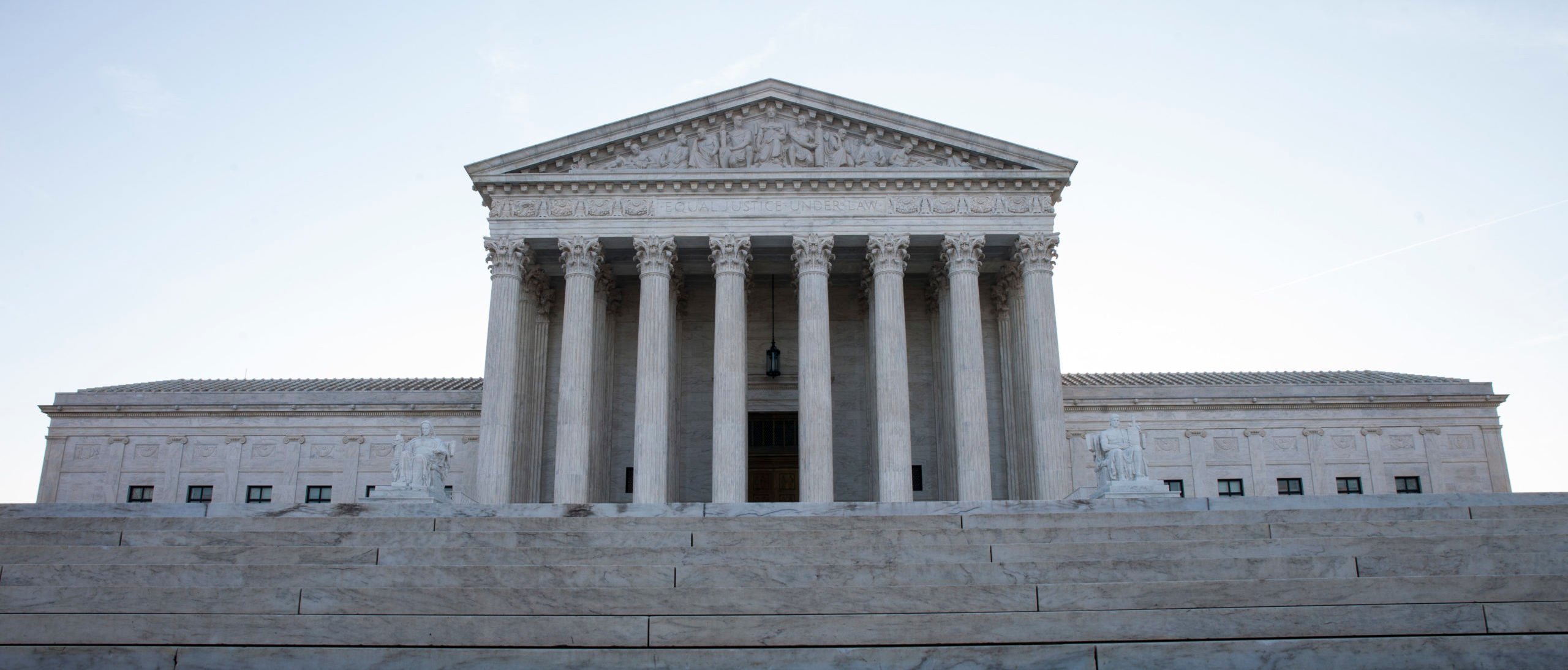Trump’s Bump Stock Ban Is Back Before The Supreme Court. Here’s What Could Happen Next
The Supreme Court may finally take up a pair of cases reviewing a federal ban on bump stocks after declining in previous years to address the issue.
Two decisions earlier this year against the ATF’s rule, which was proposed by the Trump administration in the aftermath of the 2017 Las Vegas concert mass shooting that killed 58 and wounded over 500, create a circuit split that makes the ban ripe for review. The government appealed cases from the Fifth and Sixth Circuits to the Supreme Court, where they are now both scheduled to be considered at the Justices’ Oct. 27 conference.
The Supreme Court declined to block the rule in 2019 and rejected two appeals by gun owners seeking to reverse it in 2022. But with two new appeals court rulings in favor of gun owners, the legal landscape looks different than it did when the Supreme Court rejected their appeals.
Aidan Johnston, Gun Owners of America (GOA) director of federal affairs, told the Daily Caller News Foundation it is “incredibly important” for the Supreme Court to take these cases and iron out a “mess of rulings” from federal courts. GOA, which tried to stop the ban before it took effect and promptly filed a lawsuit after the rule was finalized, was the lead plaintiff on one of the cases rejected by the Supreme Court in 2022.
Even though two appeals courts have now found the ban illegal, there is still no injunction blocking its enforcement, Johnston said. “Americans have a right to own bump stocks,” Johnston said. “The courts have said so, and yet no one’s actually allowed to do that.”
If the Supreme Court takes the cases, it would add to a docket that already includes a major case that could provide the justices a chance to clarify the “historical tradition” standard they set out for gun regulations in the 2022 New York State Rifle & Pistol Association, Inc. v. Bruen decision. The case, United States v. Rahimi, challenges a federal law prohibiting individuals subject to domestic violence restraining orders from possessing firearms.

WASHINGTON, D.C. – MARCH 20: Morning light shines outside The United States Supreme Court building on March 20, 2017 in Washington, D.C. The Senate will hold a confirmation hearing for Supreme Court Nominee Neil Gorsuch. (Photo by Zach Gibson/Getty Images)
But the bump stock cases will not be resolved on Second Amendment grounds, George Mason University Assistant Professor of Law Robert Leider told the DCNF. Primarily, he says the cases center on the intersection of administrative and criminal law.
When the ATF implemented its ban, it did so by including bump stocks, which allow semiautomatic weapons to rapidly fire by harnessing recoil energy, in the definition of “machine guns” in the National Firearms Act of 1934 (NFA). As amended in 1986, the NFA prohibits the transfer or possession of machine guns.
“Courts will defer to the regulations issued by the agency,” Leider explained. “And here you have a question of how that deference collides with the criminal law rules.”
In late September, an Obama-appointed federal district judge in Utah rejected a separate effort to block the ATF’s rule, relying on a 1984 Supreme Court ruling that established the principle that courts should defer to agency interpretations of law when the language is ambiguous, known as Chevron deference.
“So the question at bottom is whether the agency can resolve the ambiguity in a way that expands the scope of the statute or in a way that is favorable to the government in a criminal prosecution and whether courts have to confirm it,” Leider said, noting that the Chevron deference question is “hooked into a broader issue this term.”
The Supreme Court will consider overturning Chevron deference in a separate case this term, Loper Bright Enterprises v. Raimondo. Loper Bright is one of multiple major cases on administrative law the justices will consider over the coming months.
Another case, which the justices heard for oral arguments Tuesday, questions the constitutionality of the Consumer Financial Protection Bureau funding mechanism. Yet another, Securities and Exchange Commission v. Jarkesy, considers whether the SEC’s in-house adjudication process using administrative law judges (ALJs) is unconstitutional.
Adding the bump stock cases to the term’s docket would throw another big administrative law dispute in the mix. Still, the precise question of deference may not come up if the justices were to find the plain meaning of the statute prohibits the inclusion of bump stocks.
“It’s still a question in this case what the statute actually means,” Leider told the DCNF. “My guess is that if they did the plain meaning approach the bump stock rule would be struck down. Because what the bump stock is doing is facilitating repeated pulls of the trigger, but it’s only one shot that’s being fired each time the trigger is depressed.”
No comments